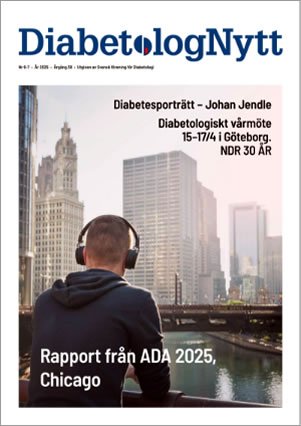Eli Lilly and Boehringer Ingelheim announced patient-reported health outcomes data from a Phase II study of their investigational novel basal insulin analogue, LY2605541, in patients with type 2 diabetes.
Study results showed that in addition to clinical results showing a statistically significant 48 percent baseline adjusted reduction in nocturnal hypoglycemia compared with insulin glargine [0.25 vs. 0.39 events/ 30 days/patient, after adjusting for baseline hypoglycemia events (p=0.020)], patients treated with LY2605541 reported a statistically significant reduction in the anxiety and fear associated with experiencing a hypoglycemic event based upon the Adult Low Blood Sugar Survey (ALBSS).
Hypoglycemia data were collected during a Phase II clinical study comparing LY2605541 with insulin glargine in patients with type 2 diabetes. In addition to the reduction in nocturnal hypoglycemia in LY2605541-treated patients, results showed the treatments had similar overall rates of hypoglycemia (p=0.08, not statistically significant).
The study used a validated patient-experience questionnaire called the Adult Low Blood Sugar Survey (ALBSS) to measure patients’ fear of mild-to-moderate hypoglycemia and associated behaviors during the previous four weeks. Hypoglycemia was defined as low blood glucose levels that were less than or equal to 70 mg/dL. The ALBSS measures the worry or fear associated with the impact of the patients’ experience with a hypoglycemic event and subsequent behaviors that are associated with avoiding future events based upon a previous experience.
The results of this study found:
Patients treated with LY2605541 had a lower average score on the fear subscale of the ALBSS at week 12 than those treated with insulin glargine (6.6 vs. 10.0; p=0.022).
LY2605541 and insulin glargine had similar effects on patient behavior at week 12 (p=NS).Examples of change in subsequent behaviors associated with avoiding future hypoglycemic events included eating large snacks, keeping blood sugar levels higher in social situations, staying at home more than liked and limiting exercise/physical activity.
LY2605541-treated patients had lower average total scores on the ALBSS compared with glargine-treated patients (13.0 vs. 16.5 in the glargine group; p=0.026).
”As we continue development of our investigational novel basal insulin, we wanted to understand both the impact of the fear of hypoglycemia and the impact of hypoglycemic events and the emotional toll for the person with diabetes,” said David Kendall, M.D., distinguished medical fellow, Lilly Diabetes. ”We look forward to further studying LY2605541 in a large Phase III program to better understand the clinical impact of these patient-reported health outcomes results.”
The Phase II, randomized, open-label, parallel study evaluated LY2605541 in lowering self-monitored fasting blood glucose levels compared to insulin glargine in adults with type 2 diabetes. Patients were converted to morning insulin administration during a four-week lead-in period and were randomized 2:1 to morning administration of LY2605541 (195 patients) or glargine (93 patients) for a total of 12 weeks.
The primary endpoint of the study showed that LY2605541 and glargine had similar effects on lowering average daily self-monitored fasting (before breakfast) glucose levels (p=0 .433) and HbA1c (p=0.279) over 12 weeks.
Following treatment with LY2605541, blood tests on liver function (as measured by mean ALT and AST levels) statistically significantly increased from baseline and were higher than with insulin glargine. The mean levels of both liver enzymes remained within the normal range during the study for glargine and LY2605541-treated patients.
In the Phase II type 2 diabetes study, triglyceride levels in patients treated with LY2605541 were not significantly different from baseline (163 mg/dL to 172 mg/dL), but statistically higher compared to insulin glargine (160 mg/dL vs. 147 mg/dL). There was no significant difference in LDL-C or HDL-C in patients treated with LY2605541 from baseline or compared with insulin glargine.
Presented at the 48th European Association for the Study of Diabetes (EASD) Annual Meeting in Berlin, Germany
From diabetescincontrol.com
Nyhetsinfo
www red DiabetologNytt

